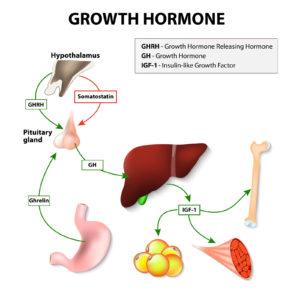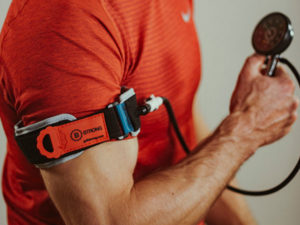WHAT IS BLOOD FLOW RESTRICTION TRAINING?
Blood flow restriction(BFR) is a safe and effective adjunct to low intensity resistance exercise or aerobic exercise that increases muscle mass, improves aerobic capacity, and aids in repair and regrowth of tissues. BFR induces physiological adaptations through metabolic stress without the mechanical stress that heavy resistance training induces. This reduces the risk of injury during training as well as excess stress to the joints and tissues.
BFR is a form of exercise that manipulates the body’s circulatory system. BFR utilizes pneumatic bands to allow arterial blood flow but reduces venous return to create an optimal anabolic environment for muscular hypertrophy while exercising. Given the superficial nature of veins, only moderate pressures are required. The arteries are not occluded with this procedure and continue to feed the limbs blood flow during the treatment session. The bands are inflated to individualized pressures prescribed by our clinicians utilizing Doppler Ultrasound. If limb occlusion pressure (LOP) is properly measured using Doppler Ultrasound, and clinical guidelines are followed about working pressures, the risk of using BFR is extremely low. Once the safe pressures have been established by the clinician the patient will be put through a series of individualized exercises.
Simple, low-load exercise produces profound muscle “burn” comparable to intense anaerobic training.
This strong fatigue triggers the body to release hormones such as human growth hormone (HGH), which in turn produces hypertrophy and strength gains comparable with heavy exercise or traditional weight lifting. The hormones circulating in the blood stream benefit all areas of the body that were working creating a systemic benefit. BFR sessions are short and should never last longer than 20 minutes.
Not all individuals are appropriate for this type of training. Your trainer can assess if BFR will be a good adjunct to your program.




